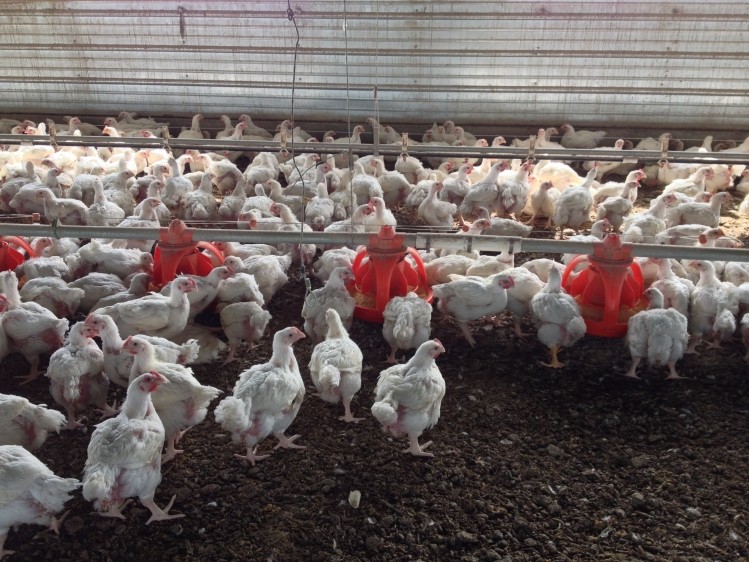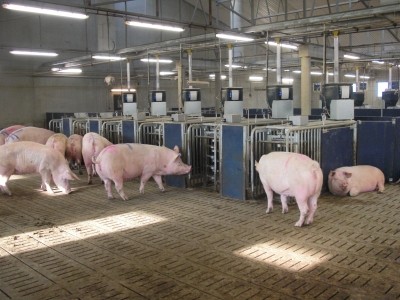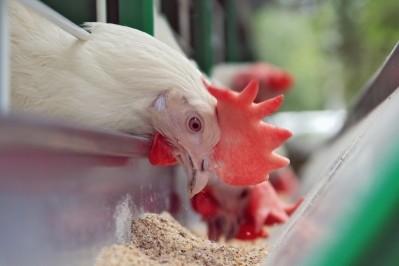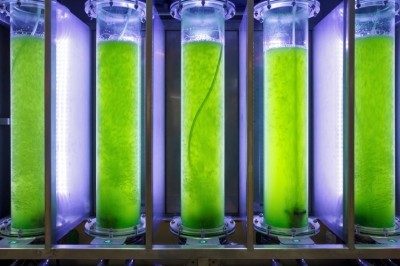Algae-based antioxidant may support broilers through mycotoxins, heat stress

A group of researchers at the Federal University of Parana in Brazil examined the use of yeast-based glucomannan with or without an algae-based antioxidant in mycotoxin contaminated feed for broiler chickens.
“The objective of this study was to investigate the effects of the dietary inclusion of an algae-based antioxidant and esterified glucomannan derived from yeast cell wall for broiler chickens affected by mycotoxicosis before and after the exposure to heat stress during the pre-slaughter period,” the researchers said. “The productive performance, intestinal morphology, and meat quality variables were evaluated.”
The group found that the antioxidants could partially offset the issues caused by mycotoxin presence in feed, the researchers said. But, heat stress continued to have a negative influence on meat quality.
“In conclusion, the classification of the corn was an effective strategy to reduce its amount of toxins, and the antioxidant supplementation partially improved the FCR in contaminated corn-fed broiler chickens,” they said.
Why glucomannan and antioxidants?
Mycotoxin presence in poultry feed can inhibit immune functioning and reduce productivity, said the researchers. Binding compounds can be used to minimize negative effects of mycotoxicosis.
Yeast-based esterified glucomannan is an absorbent for production animals and has been used with several types of mycotoxins, they said. Its effectiveness in reducing toxic effects from mycotoxins in broiler chickens has been demonstrated in previous studies.
Poultry feeds are often supplemented with oils, but that feed ingredient is prone to oxidation as it contains a large amount of unsaturated fatty acids, they said. Both oxidation and mycotoxins can produce free radicals, which cause a reduction in antioxidants, oxidative stress, limited intake of dietary antioxidants, poor meat quality and malabsorption syndrome.
“Borutova et al. (2008) demonstrated that zearalenone and deoxynivalenol decreased the activity of glutathione peroxidase and increased the level of malondialdehyde in the liver of broiler chickens,” said the researchers. “Therefore, antioxidant supplementation in the diets of broilers may counteract the negative effects of mycotoxicosis.”
Heat stress also can alter the structure and function of membranes and the oxidative metabolism, they said.
“Lipid peroxidation is one of the main processes in which loss in the meat quality occur, leading to changes in the flavor and taste, oxidation of meat pigments, and impaired meat color,” they said. “Therefore, inclusion of greater doses of antioxidants may be needed under such conditions to minimize the effects of poor quality feed, poor environmental conditions or both.”
The team posited that combining antioxidants and an organic absorbent might be an effective approach to limit negative reactions from mycotoxin-contaminated feed and heat stress.
Study details
In the study, 1,225 broiler chicks were given one of five diets for 44 days, said the researchers. Feeds included a control basal diet with uncontaminated corn (CON); that diet contaminated with mycotoxins (CC); the CC feed with esterified glucomannan; CC with an algae based antioxidant and the CC diet with both esterified glucomannan and algae-based antioxidant.
Feed formulations within the trial diets were altered as chicks aged, they said. Mycotoxin contamination included fumonisin B1 and B2, nivalenol, diacetoxyscirpenol and zearalenone.
On days 42 to 44 birds also faced a heat stress challenge, they said.
Chicken weight was noted weekly, body weight gain (BWG), feed intake (FI), feed conversion ratio (FCR) and survival rate were calculated, said the researchers. Chickens were sampled for jejunum on days seven and 21, and villus and crypt depths and heights were measured to determine absorbption surface in the intestine.
Birds also were harvested on day 42 and 44 to measure carcass yield and meat quality, they said.
Results
Diets were not found to alter body weight gain or feed intake, said the researchers, but diets with mycotoxins reduced the FCR. However, those getting the supplements saw partial improvement.
“The feed conversion ratio was affected by the diets, in which the best result was observed for the birds fed the CON diet, while birds fed CC diet showed an impairment in the FCR,” they said. “Besides, the supplementation with antioxidants partially recovered the FCR.”
No differences were found for villus height, crypt depth or absorption, they said, though the positive control tended to have a higher crypt depth on day 21 and those getting the contaminated feeds trended toward the largest villus:crypt ratios.
Birds getting diets with mycotoxins also had reduced meat quality, they said.
“No dietary effects were observed for carcass, breast, thigh, and fat yield when the broiler chickens were kept in a thermoneutral environment during the pre-slaughter period,” said the researchers. “However, the carcass yield decreased in the broiler chickens submitted to a pre-slaughter heat stress for 48 h and fed naturally contaminated corn; a better carcass yield was observed in the broiler chickens fed diets supplemented with the combination of adsorbent and antioxidant.”
Source: Livestock Science
Title: Efficacy of yeast derived glucomannan or algae-based antioxidant or both as feed additives to ameliorate mycotoxicosis in heat stressed and unstressed broiler chickens
DOI: 10.1016/j.livsci.2016.09.005
Authors: C. Bortoluzzi, J. Schmidt, H. Bordignon, L. Fülber, J. Layter, J. Fernandes















